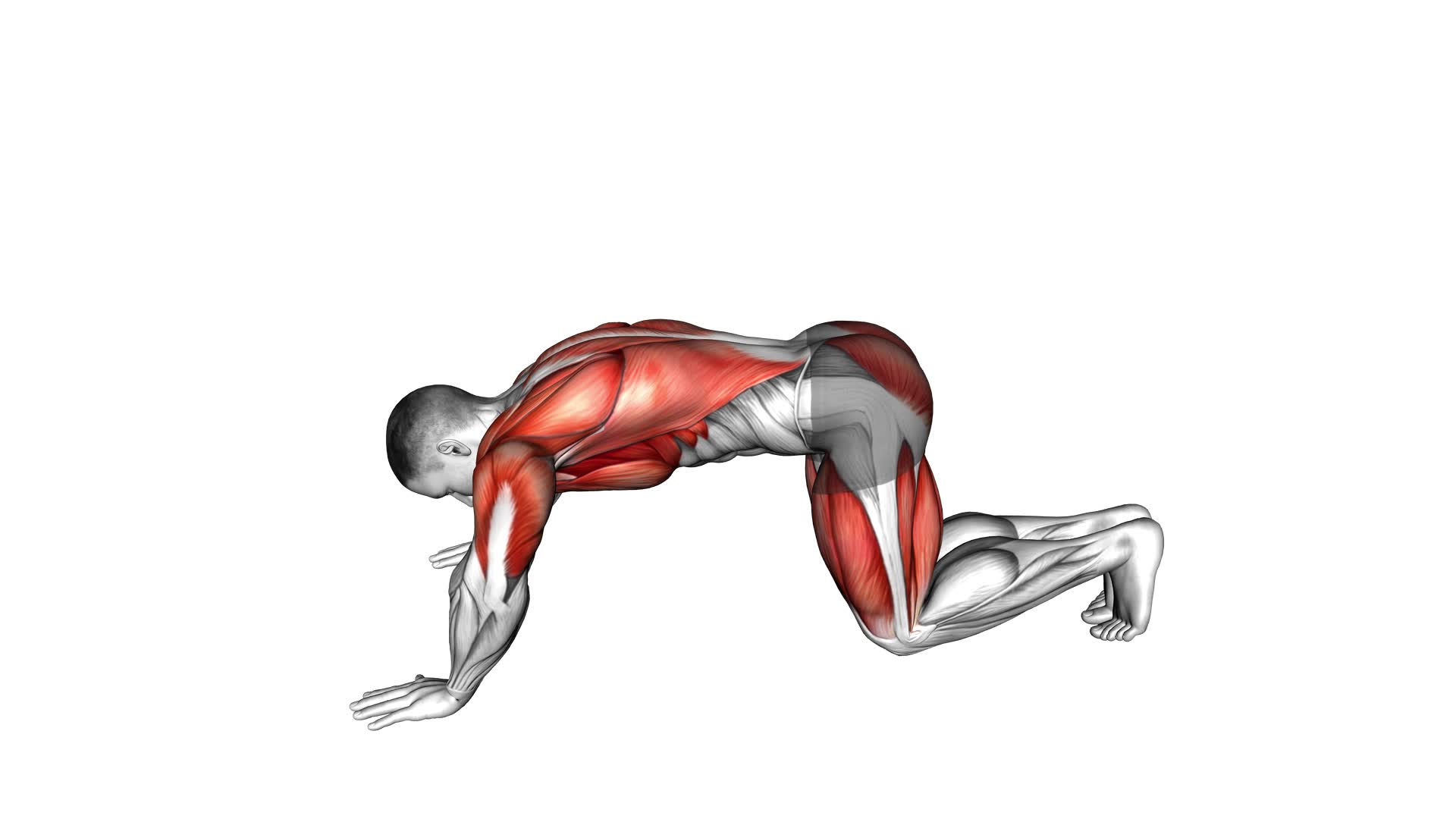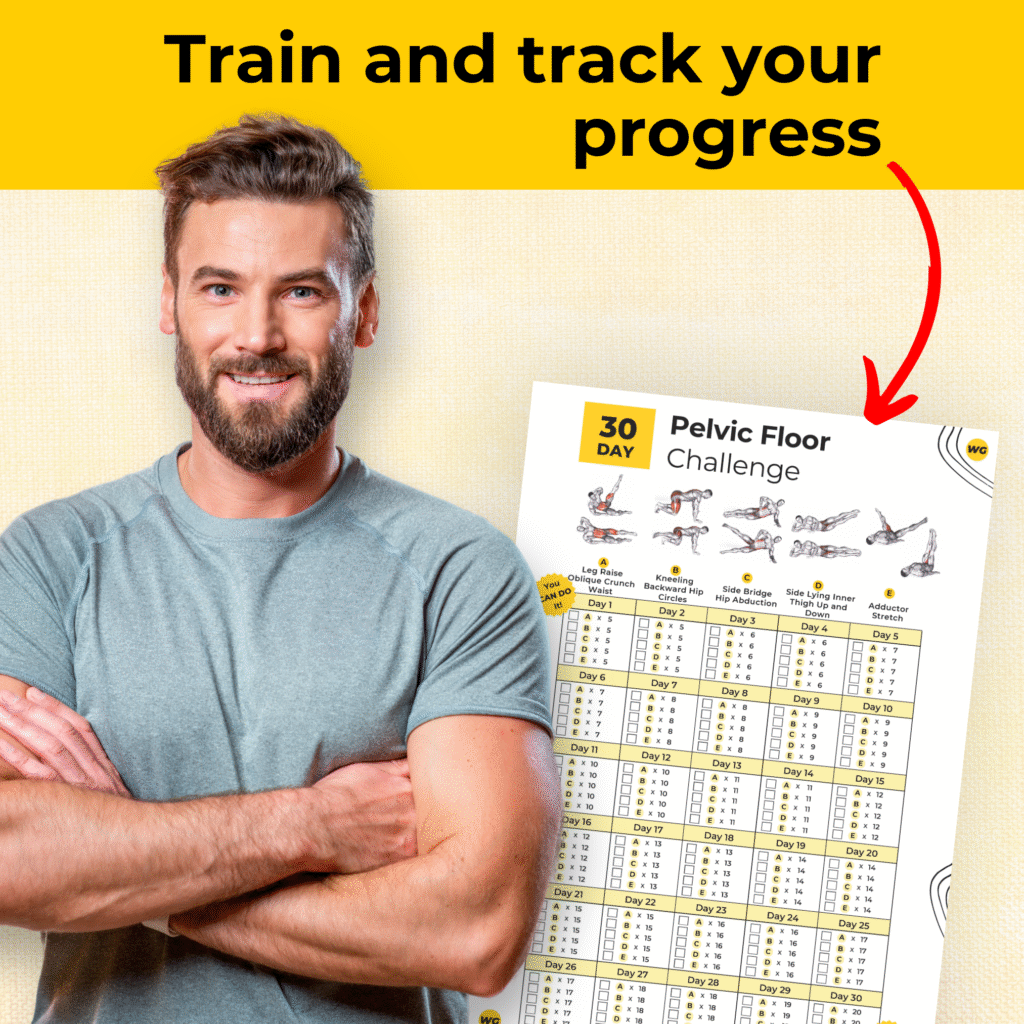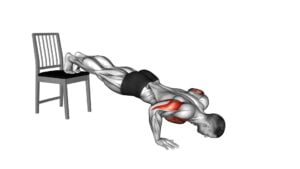Push-up Pull (male) – Video Exercise Guide & Tips

Looking to level up your fitness routine? Check out this video exercise guide and tips for the push-up pull!
Watch This Exercise Video
In just a few minutes, you'll learn the proper technique, common mistakes to avoid, and even variations to keep things interesting.
Whether you're a beginner or a seasoned pro, these tips will help you increase the difficulty and incorporate the push-up pull into your workout routine.
Get ready to challenge yourself and see results!
Key Takeaways
- Push-up pull targets multiple muscle groups simultaneously, including the chest, shoulders, back, and arms.
- It improves overall strength and fitness while increasing the efficiency and effectiveness of the workout.
- Proper technique is crucial, including starting in a high plank position, engaging the core, and squeezing the shoulder blades together.
- There are various variations and modifications available to accommodate different fitness levels and target specific muscles.
Benefits of Push-up Pull
You can experience several benefits by incorporating push-up pulls into your workout routine.
Push-up pull variations offer a unique combination of upper body and core exercises, helping you build strength and improve overall fitness.
One of the main benefits of push-up pulls is that they target multiple muscle groups simultaneously. By engaging your chest, shoulders, back, and arms, you can achieve a more efficient and effective workout in less time.
Additionally, push-up pulls help improve your balance and stability, as they require you to engage your core muscles to maintain proper form throughout the exercise. This can lead to better posture and reduced risk of injury in daily activities.
Another advantage of push-up pulls is that they can be easily modified to suit different fitness levels. Whether you're a beginner or an advanced athlete, you can adjust the difficulty by changing the position of your hands or feet, or by adding resistance using resistance bands or weights.
Proper Technique for Push-up Pull
Mastering the proper technique for push-up pulls is essential for maximizing your workout results and preventing injuries. Push-up pulls are a compound exercise that targets multiple muscle groups simultaneously, including the chest, shoulders, back, and arms.
To perform a push-up pull, start in a high plank position with your hands slightly wider than shoulder-width apart. Lower your body down into a push-up, keeping your core engaged and your elbows close to your sides. As you push back up, lift one hand off the ground and pull it towards your chest, squeezing your shoulder blades together. Lower your hand back down and repeat on the other side.
This exercise can be challenging, but there are alternatives that can help you build strength and work towards mastering the push-up pull. You can start with modified push-up pulls by performing the exercise on your knees or using a resistance band for assistance. As you progress, you can increase the difficulty by using a stability ball or adding a weighted vest.
Remember to maintain proper form throughout the exercise and listen to your body to avoid any unnecessary strain or injury. Push-up pulls are a great way to target multiple muscle groups and improve your overall upper body strength. Incorporate them into your workout routine and watch your strength and muscle definition increase.
Keep pushing yourself and never settle for less than your best!
Common Mistakes to Avoid
When performing the push-up pull exercise, there are a few common mistakes to watch out for.
First, make sure your hand placement is correct – too wide or too narrow can put strain on your wrists and shoulders.
Second, avoid sagging your lower back, as this can lead to injury and decrease the effectiveness of the exercise.
Lastly, remember to engage your core throughout the movement to maintain stability and maximize the benefits of the exercise.
Incorrect Hand Placement
Avoid the mistake of placing your hands incorrectly when performing the Push-up Pull exercise. Many people make common hand placement mistakes that can hinder their progress and potentially lead to injuries.
To ensure you get the most out of this exercise, it's essential to use the correct hand placement technique. Start by positioning your hands slightly wider than shoulder-width apart on the ground. Your fingers should be pointing forward, with your palms flat and firmly pressed into the floor.
Keep your wrists in line with your shoulders to maintain proper alignment and prevent strain. By mastering the correct hand placement technique, you'll engage the correct muscles and maximize the effectiveness of the Push-up Pull exercise.
Sagging Lower Back
To prevent sagging in your lower back during the Push-up Pull exercise, focus on maintaining a strong and stable core. This is crucial because a weak core can lead to improper alignment, resulting in a sagging lower back and potential lower back pain.
When performing the exercise, engage your abdominal muscles by pulling your belly button towards your spine. This will help stabilize your torso and prevent excessive arching in your lower back. Additionally, make sure to keep your glutes activated throughout the movement. By doing so, you'll create a solid foundation and promote proper alignment.
Not Engaging Core
Engage your core to maintain proper form and prevent common mistakes during the Push-up Pull exercise.
Not engaging your core can lead to a lack of stability and reduced effectiveness of the exercise.
When you engage your core, you activate and strengthen the muscles in your abdomen, lower back, and pelvis.
This helps to stabilize your body and maintain a straight line from head to toe.
By engaging your core, you also improve your overall core strength, which is essential for various other exercises and daily activities.
Variations of Push-up Pull
Ready to take your push-up pull routine to the next level? Here are three variations to challenge your upper body strength and build muscle.
Try the incline push-up variation to target your chest and shoulders, or the diamond push-up technique to engage your triceps.
For an even greater challenge, progress to the one-arm push-up and become a true push-up pull master.
Push yourself and see the results you've been working for!
Incline Push-Up Variation
Start by positioning your hands on an elevated surface for the incline push-up variation of the push-up pull exercise.
This modification of the incline push-up is one of the advanced push-up variations that can help you challenge your upper body strength and build muscle.
By placing your hands on an elevated surface, such as a bench or a step, you increase the difficulty of the exercise and engage your chest, shoulders, and triceps even more.
This variation is particularly beneficial for individuals who are looking to progress in their push-up journey and want to target their upper body muscles in a more intense way.
Once you have mastered the incline push-up variation, you can move on to the next section where we discuss the diamond push-up technique.
Diamond Push-Up Technique
To continue building upon your upper body strength and muscle growth, let's explore the different variations of the diamond push-up technique within the push-up pull exercise.
Diamond push-ups, also known as triangle push-ups, are an excellent way to target your triceps, chest, and shoulders. They get their name from the hand positioning, where your thumbs and index fingers form a diamond shape on the mat.
To modify this exercise, you can perform diamond push-ups on your knees or elevate your feet on an elevated surface. These modifications allow you to adjust the difficulty level based on your fitness level.
One-Arm Push-Up Progression
Mastering the one-arm push-up is a challenging but rewarding progression in the push-up pull exercise, allowing you to develop impressive upper body strength and stability.
The key to performing a proper one-arm push-up lies in maintaining proper form. Start by placing one hand slightly wider than shoulder-width apart, with your fingers pointing forward. Keep your body in a straight line from head to toe, engaging your core and glutes.
As you lower yourself towards the ground, focus on keeping your elbow close to your side. Push back up to the starting position, maintaining control and stability throughout the movement.
The benefits of the one-arm push-up include increased strength in your chest, shoulders, and triceps, as well as improved core stability and balance.
Practice regularly and gradually increase the difficulty by elevating your feet or using a stability ball. Keep challenging yourself and enjoy the progress you make on your journey to mastering the one-arm push-up.
Tips for Increasing Difficulty
Increase the difficulty of the Push-up Pull exercise by incorporating advanced variations to challenge your muscles even further.
One way to increase the intensity is by performing the exercise on an unstable surface, such as a stability ball or a BOSU ball. This will require your muscles to work harder to stabilize your body, making the exercise more challenging.
Another way to modify the Push-up Pull is by adding a weighted vest or placing weight plates on your back. This will increase the resistance and make your muscles work harder.
You can also try performing the exercise with a wider hand placement to target your chest muscles more, or with a narrower hand placement to target your triceps and shoulders.
Additionally, you can elevate your feet on a bench or step to place more emphasis on your upper body.
These variations will help you progress and continue to challenge your muscles as you get stronger.
Now, let's move on to incorporating the Push-up Pull into your workout routine.
Incorporating Push-Up Pull Into Your Workout Routine
To incorporate the Push-up Pull exercise into your workout routine, start by performing it on a stable surface with your hands placed slightly wider than shoulder-width apart. This exercise is a great way to work your upper body, specifically targeting your chest, shoulders, and back muscles.
If you find the standard Push-up Pull too challenging, there are modifications you can make to gradually build up your strength. For example, you can start by performing the exercise on an inclined surface, such as a bench or step, to make it easier. As you become more comfortable, you can gradually decrease the incline until you're able to perform the exercise on the floor.
To integrate the Push-up Pull into a full body workout routine, you can incorporate it as part of a circuit or superset. For example, you can alternate between sets of Push-up Pulls and exercises that target other muscle groups, such as squats or lunges. This will help you maximize your workout and target multiple muscle groups at once.
Remember to always listen to your body and adjust the intensity and difficulty level of the exercise as needed. Consistency and gradual progression are key to achieving your fitness goals. So, start incorporating the Push-up Pull into your routine and watch as your upper body strength and muscle definition improve over time.
Frequently Asked Questions
What Muscles Does the Push-Up Pull Exercise Target?
The push-up pull exercise targets multiple muscles in your body, including your chest, shoulders, triceps, and core. It's a challenging move that requires strength and stability.
To modify for beginners, you can start by doing push-ups on your knees or using an elevated surface. As you progress, you can gradually increase the difficulty by performing the exercise on your toes.
Keep pushing yourself and you'll see improvements in no time!
Are There Any Modifications or Alternatives for Beginners or Individuals With Limited Upper Body Strength?
If you're a beginner or have limited upper body strength, there are modifications and alternatives to the push-up pull exercise.
You can start by doing knee push-ups instead of full push-ups to decrease the intensity.
Another alternative is to use resistance bands or a TRX suspension trainer to assist with the movement.
Remember to focus on form and gradually increase the difficulty as you get stronger.
Keep pushing yourself and you'll see progress in no time!
How Many Repetitions and Sets Should Be Performed for Optimal Results?
To get optimal results from push-up pull, it's important to know how many repetitions and sets to perform. The number of reps and sets depends on your fitness level and goals.
By incorporating push-up pull into a full body workout routine, you can benefit from its ability to target multiple muscle groups and improve upper body strength.
For advanced individuals, increasing difficulty can be achieved by adding weight, using resistance bands, or performing more challenging variations like one-arm push-up pull.
Is It Necessary to Use Any Equipment or Can the Exercise Be Done With Just Bodyweight?
Yes, you can definitely perform the push-up pull exercise without any equipment. Using just your bodyweight can still provide a challenging workout and help build strength in your upper body.
However, incorporating equipment such as resistance bands or a pull-up bar can offer additional benefits. Equipment can increase the intensity of the exercise, target different muscle groups, and provide more variation to your workout.
Just remember to avoid common mistakes like improper form and overexertion to ensure optimal results. Keep pushing yourself!
Are There Any Specific Breathing Techniques That Should Be Followed During the Push-Up Pull Exercise?
When doing the push-up pull exercise, it's important to focus on your breathing. Take a deep breath in as you lower your body down and exhale as you push back up. This will help you engage your core and maintain proper form throughout the exercise.
Additionally, there are variations you can try to challenge yourself even more, such as adding a clap or raising one leg off the ground.
Keep pushing yourself and you'll see progress in no time!
Conclusion
Incorporating the push-up pull into your workout routine can provide numerous benefits, including increased upper body strength and improved overall muscle tone.
By following the proper technique and avoiding common mistakes, you can maximize the effectiveness of this exercise.
Additionally, incorporating variations and gradually increasing difficulty can help you challenge your muscles and continue to progress.
So, get ready to push your limits and achieve your fitness goals with the push-up pull!

Author
Years ago, the spark of my life’s passion ignited in my mind the moment I stepped into the local gym for the first time. The inaugural bead of perspiration, the initial endeavor, the very first surge of endorphins, and a sense of pride that washed over me post-workout marked the beginning of my deep-seated interest in strength sports, fitness, and sports nutrition. This very curiosity blossomed rapidly into a profound fascination, propelling me to earn a Master’s degree in Physical Education from the Academy of Physical Education in Krakow, followed by a Sports Manager diploma from the Jagiellonian University. My journey of growth led me to gain more specialized qualifications, such as being a certified personal trainer with a focus on sports dietetics, a lifeguard, and an instructor for wellness and corrective gymnastics. Theoretical knowledge paired seamlessly with practical experience, reinforcing my belief that the transformation of individuals under my guidance was also a reflection of my personal growth. This belief holds true even today. Each day, I strive to push the boundaries and explore new realms. These realms gently elevate me to greater heights. The unique combination of passion for my field and the continuous quest for growth fuels my drive to break new ground.







